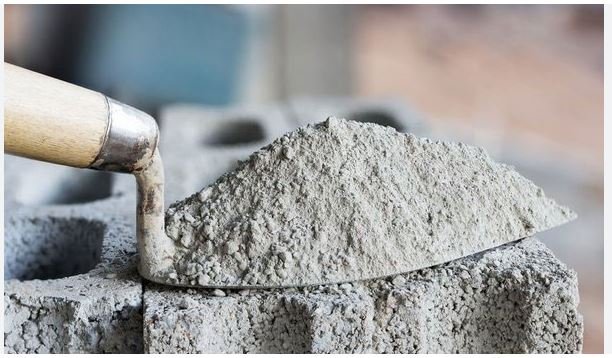The construction industry continuously evolves, driven by the need for more durable and sustainable building practices. One significant factor influencing the longevity of construction projects is the use of construction chemicals. These specialized products enhance the performance and durability of materials, contributing to the overall lifespan of buildings and infrastructure. This article explores the impact of construction chemicals, with a particular focus on polyaspartic coating, on project longevity.
Understanding Construction Chemicals
Construction chemicals encompass a wide range of products, including adhesives, sealants, waterproofing agents, and protective coatings. These chemicals are formulated to improve the physical and chemical properties of construction materials, ensuring that structures can withstand various environmental stresses over time.
Key Types of Construction Chemicals
- Adhesives and Sealants: These substances are essential for bonding materials and preventing water and air infiltration. They play a crucial role in ensuring structural integrity and preventing damage from moisture and environmental factors.
- Concrete Additives: These chemicals are incorporated into concrete mixtures to enhance properties such as workability, strength, and resistance to environmental factors. They can significantly impact the durability of concrete structures.
- Protective Coatings: These include paints, primers, and specialized coatings like polyaspartic coatings. They protect surfaces from corrosion, UV exposure, and abrasion, extending the life of the materials beneath them.
The Role of Polyaspartic Coating in Project Longevity
Polyaspartic coatings are a specific type of protective coating that has gained popularity in recent years due to their impressive performance characteristics. These coatings are part of the polyurea family and are known for their rapid curing times and superior durability.
Benefits of Polyaspartic Coatings
- Rapid Curing: One of the most significant advantages of polyaspartic coatings is their fast curing time, allowing for quick project completion. This feature minimizes downtime and enables projects to move forward without prolonged interruptions.
- High Durability: Polyaspartic coatings offer excellent resistance to abrasion, chemicals, and UV light. This durability makes them ideal for high-traffic areas, industrial floors, and outdoor applications where exposure to harsh conditions is common.
- Flexibility and Adhesion: These coatings have excellent flexibility, allowing them to accommodate the natural movements of the substrate. Their strong adhesion properties ensure that they bond effectively to a variety of surfaces, including concrete and metal.
- Aesthetic Appeal: Polyaspartic coatings come in various colors and finishes, enabling designers and architects to enhance the aesthetic quality of surfaces while providing essential protection.
Applications of Polyaspartic Coatings
- Industrial Flooring: The chemical and abrasion resistance of polyaspartic coatings makes them ideal for factories and warehouses, where heavy machinery and foot traffic can wear down traditional flooring materials.
- Parking Garages: Their UV resistance ensures that the coatings maintain their appearance and functionality even in exposed environments.
- Residential Spaces: Homeowners are increasingly using polyaspartic coatings for garages, patios, and driveways, benefiting from their durability and aesthetic versatility.
Long-Term Impact on Construction Projects
The use of construction chemicals, especially polyaspartic coatings, directly influences the longevity of construction projects. By enhancing the durability of materials and protecting them from environmental damage, these chemicals can significantly reduce the frequency of repairs and maintenance.
Cost Efficiency
Investing in high-quality construction chemicals can lead to long-term cost savings. While the initial costs may be higher, the durability and reduced need for repairs can make a significant difference in the overall project budget. For instance, using polyaspartic coatings in an industrial setting can minimize downtime and maintenance costs, ultimately contributing to a more efficient operation.
Environmental Considerations
The construction industry is increasingly aware of its environmental impact. Many modern construction chemicals, including polyaspartic coatings, are designed with sustainability in mind. They often contain fewer volatile organic compounds (VOCs), contributing to better indoor air quality and reducing harmful emissions. This shift towards eco-friendly products not only benefits the environment but also enhances the longevity of projects by ensuring compliance with evolving regulations.
Enhanced Safety
Safety is a paramount concern in construction. The application of construction chemicals can improve the safety of building materials. For example, polyaspartic coatings can provide slip-resistant surfaces, reducing the risk of accidents in both commercial and residential spaces. By investing in safer materials, project managers can enhance overall project longevity by mitigating risks associated with workplace injuries.
Challenges and Considerations
While the benefits of construction chemicals are clear, there are challenges to consider:
- Proper Application: The effectiveness of construction chemicals depends on proper application. Misapplication can lead to failures and reduced project longevity.
- Cost: Although construction chemicals can offer long-term savings, their initial costs may deter some project managers. It’s crucial to weigh these costs against the potential benefits.
- Material Compatibility: Not all chemicals are compatible with every type of construction material. Understanding the specific requirements and limitations is essential for successful application.
Conclusion
The impact of construction chemicals, particularly polyaspartic coating, on project longevity cannot be overstated. These products enhance the durability, safety, and aesthetic appeal of construction materials, ultimately contributing to more sustainable and long-lasting structures. As the construction industry continues to innovate, the strategic use of construction chemicals will play a vital role in shaping the future of building practices, ensuring that projects stand the test of time. By understanding the benefits and challenges associated with these chemicals, project managers can make informed decisions that will benefit their projects for years to come.



